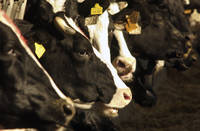Types of monitoring

Different IES require different types of monitoring. This is dependent on the context, the ecosystem service, agricultural production and impacts considered, and the rigor required by the investors. Developing a very detailed and cost intensive methodology that cannot be sustained by the initiative in the long run, either due to lack of funds or insufficient equipment and skills, will not adequately track impact.
Levels of precision can range from broad estimations based on global coefficients to site-specific sampling.
Higher levels of precision (Tier 3) are often linked to compliance with environmental regulation. The level of monitoring precision of voluntary investments, linked to ecosystem service input can range from Tier 1- 3, dependent on requirements of the investor and the returns of investment sought. Comparatively, voluntary investments de-linked from input factors are more likely to require lower monitoring rigor (Tier 1) due to the lack of direct link to ecosystem services outcomes.
Tier 1: Estimation
Some programmes rely on broad estimation of outcomes, based on experience from elsewhere, and the assumption that a certain activity leads to certain results. Applying this level of monitoring allows the programme to move fast and at lower costs, but with less confidence on the results.
This level of monitoring works well when the change in environmental outcome expected is low, and the idea is more rewarding the farmer for already positive behavior, than incentivizing her to improve it. This would be the case when estimating the carbon benefits of a forest conservation effort simply by calculating the carbon storage potential of the predominant tree species.
Example: Lombok, West Nusa Tenggara, Indonesia

This watershed protection PES scheme is monitored through estimations. An intermediary multi-stakeholder public agency (IMP) monitors PES-member farmers annually through visual assessment of replantation areas within the protected forest, and focus group discussions to determine economic impact from payments. Payments are conditional on fulfilling reforestation requirements but quantification of the ecosystem services and economic benefits is not a requirement.
Tier 2: Activity-based MRV based on an estimated baseline
Activity-based methodologies to measure, report and verify impacts (MRV) often have an estimated baseline of the land management practices, and focus on ensuring improved practices are adopted instead. The new land management options are selected from experience in other areas with similar characteristics. Some methodologies also carry out site-specific sampling of the ecosystem service in question in some of the farms to calibrate the baseline and improve its accuracy. Verification happens through a random sample, against self-reported data gathered by the farmers.
Example: Bio Carbon Fund, Western Kenya

An initial baseline for this project was established by its facilitator, Vi Agroforestry. 200-300 farmers were sampled to map current agricultural systems and model estimated biomass and model soil carbon sequestration gained from improving farming practices that would reduce soil degradation and increase agroforestry cover. The project will measure and quantify land improvements against the baseline (and thus carbon sequestration) through GIS monitoring, backed up by ground-truthing and farmer’s self-assessment and participatory monitoring.
Tier 3: Verification of results
These methods include more frequent and random field sampling for verification of results, with high levels of accuracy. A combination of sampling, modelling, or other methods is used against this baseline to estimate the added ecosystem services that the improved practices deliver. These methodologies are often used when ecosystem services beneficiaries require more precise justification for their investment, such as for mandatory greenhouse gas reductions, water quality requirements above the legally mandated and compliance with biodiversity offsets. This methodology is used in small-scale agreements with high ES sensitivity, such as in the headwaters of a high value spring, or an important biodiversity hotspot.
Example: Vittel, France

Field sampling and verification of the project’s conditionality is conducted by an intermediary, Agriair. This includes monitoring farming practices, livestock stocking rate, the good use of new building facilities (ensuring animal waste is properly disposed of), and a review of all farm accounts as per the PES contract. Until chemical inputs were no longer applied in the farms in 2004, INRA (the National Institute for Agronomic Research) conducted year-round monitoring of soil nitrate levels. Daily water quality monitoring is conducted by Nestlé Waters. Payments are dependent on the verification of farm conditionality.
